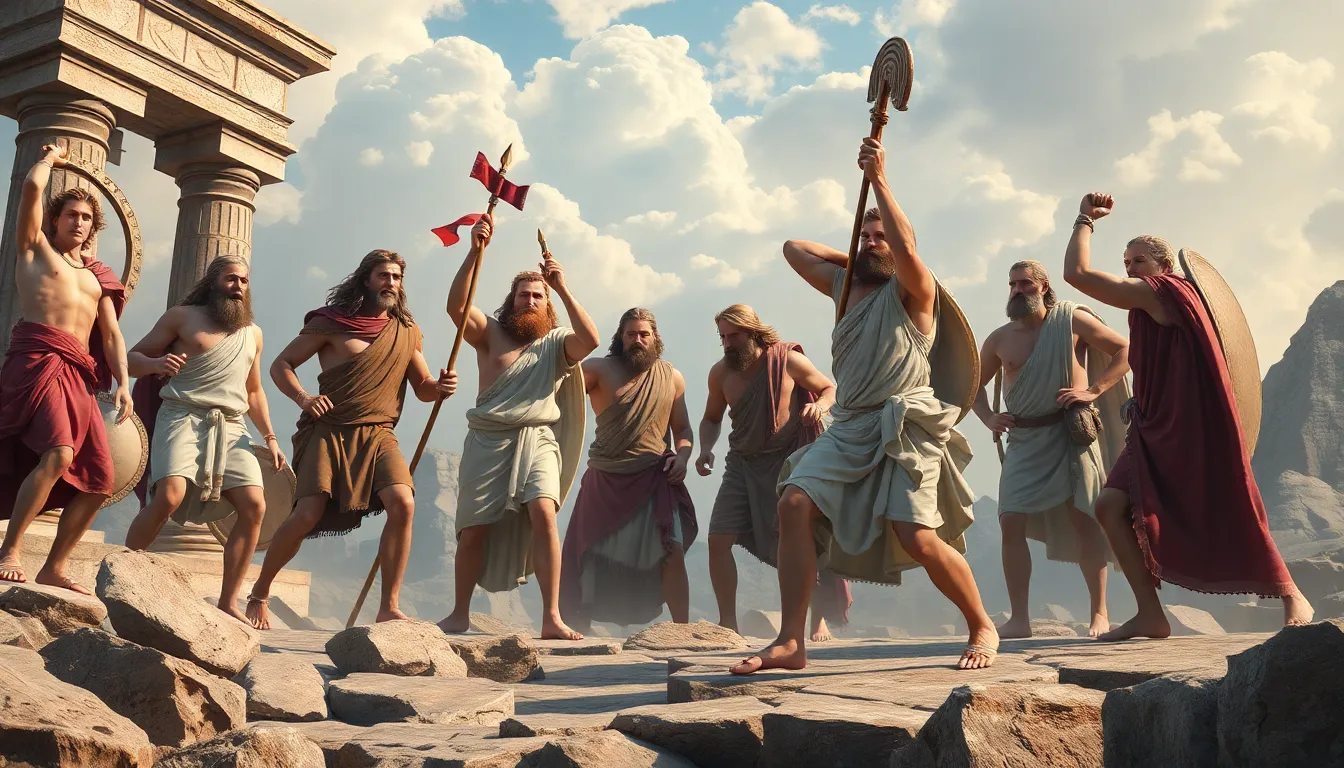Heracles’ Twelve Labors: The Trials That Tested His Limits
I. Introduction
Heracles, known for his immense strength and heroic feats, is one of the most celebrated figures in Greek mythology. His adventures have transcended time, symbolizing the struggle against overwhelming odds and the quest for redemption. The Twelve Labors of Heracles stand as a monumental series of challenges that not only tested his physical prowess but also his character and resolve.
The Twelve Labors serve as a rite of passage for Heracles, marking his journey from a man burdened by guilt to a revered hero. Each labor presented unique challenges that shaped Heracles into the legendary figure we know today. This article aims to explore these trials, their significance, and the impact they had on Heracles’ character.
II. The Origin of the Twelve Labors
The origins of the Twelve Labors are steeped in tragedy and divine conflict. After a fit of madness, induced by the goddess Hera, Heracles unwittingly killed his wife Megara and their children. Overcome with grief and seeking redemption, he consulted the Oracle of Delphi, who advised him to serve King Eurystheus of Tiryns.
King Eurystheus, wary of Heracles’ strength and capabilities, devised the Twelve Labors as a punishment, intending to make them impossible. This challenge was not merely a test of strength but a means for Heracles to atone for his past sins. Completing the labors would ultimately lead to his redemption and immortality.
III. The First Labor: The Nemean Lion
The first labor set the stage for Heracles’ incredible journey. The Nemean Lion was a fearsome beast known for its impenetrable skin. Many had tried to slay the lion, but all had failed miserably. Heracles approached this challenge with a unique strategy; rather than using weapons, he opted to engage the lion in hand-to-hand combat.
After a fierce battle, Heracles succeeded in strangling the lion to death. He then used the lion’s own claws to skin it, wearing its hide as armor. This victory symbolized not just strength, but also ingenuity and the idea that one must sometimes think outside the box to overcome challenges.
IV. The Second Labor: The Lernaean Hydra
The second labor introduced Heracles to the Lernaean Hydra, a monstrous serpent with multiple heads. For each head that was severed, two more would grow back in its place. Faced with this daunting task, Heracles enlisted the help of his nephew Iolaus. Together, they devised a plan: as Heracles cut off the heads, Iolaus cauterized the stumps to prevent regeneration.
This labor taught valuable lessons about teamwork and resilience. It emphasized that even the strongest heroes cannot succeed alone and that collaboration can lead to triumph against overwhelming odds.
V. The Third Labor: The Ceryneian Hind
The Ceryneian Hind was a sacred deer, revered for its golden antlers and fleetness of foot. Capturing this creature presented an ethical dilemma for Heracles; he had to balance his duty to complete the labor with his respect for nature. He pursued the hind for a year before finally capturing it alive and bringing it back to Eurystheus.
This labor reflects the complexity of Heracles’ character, showcasing the importance of respecting the natural world while fulfilling one’s responsibilities.
VI. The Fourth Labor: The Erymanthian Boar
The Erymanthian Boar was another monstrous beast that terrorized the region. Known for its size and ferocity, capturing the boar alive was a daunting task. Heracles employed clever tactics to corner the creature in deep snow, making it easier to capture without harming it.
This labor illustrates the theme of overcoming fear; Heracles faced the monstrous boar with courage and ingenuity, embodying the strength of both body and mind.
VII. The Final Labors: A Summary of Trials Five to Twelve
The remaining labors further tested Heracles’ ingenuity, courage, and perseverance. Here is a brief overview of each:
- The Augean Stables: Heracles was tasked with cleaning the stables of King Augeas in a single day, a seemingly impossible feat. He accomplished this by diverting two rivers to wash out the filth.
- The Stymphalian Birds: These man-eating birds had metallic beaks and were a menace. Heracles used a rattle given by Athena to scare them into the air before shooting them down.
- The Cretan Bull: Capturing this bull involved a battle of wits and strength, culminating in Heracles riding it back to Eurystheus.
- The Mares of Diomedes: Heracles tamed the man-eating mares by feeding them their master, Diomedes, showcasing both his strength and cunning.
- The Belt of Hippolyta: Heracles was sent to retrieve the belt from the Amazon queen, which involved diplomacy and combat.
- The Cattle of Geryon: Heracles journeyed to the end of the world to capture the cattle, facing numerous challenges along the way.
- The Apples of the Hesperides: Tasked with retrieving the golden apples, Heracles showcased his cleverness by enlisting the help of Atlas.
- The Capture of Cerberus: The final labor required Heracles to descend into the Underworld and capture the three-headed dog, representing the ultimate test of his strength and courage.
Throughout these labors, themes of ingenuity, courage, and perseverance emerged, reinforcing Heracles’ status as a hero capable of overcoming insurmountable obstacles.
VIII. Conclusion
The Twelve Labors of Heracles represent a profound transformation for the hero, shaping him into a symbol of strength and resilience. Through each trial, Heracles evolved, learning valuable lessons about teamwork, respect for nature, and the importance of cleverness over brute strength.
Heracles’ legacy endures in modern culture, inspiring countless stories, films, and artworks, reminding us of the hero’s journey and the triumph of the human spirit. His story is a testament to the idea that even in the face of overwhelming challenges, one can find redemption and emerge victorious.
In reflecting on Heracles’ journey, we see a personal and universal narrative of struggle, growth, and the pursuit of greatness that resonates with audiences across generations.




